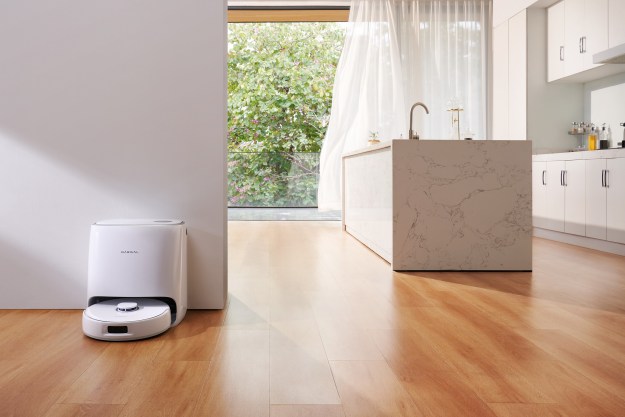One hundred years in the future, we’ll barely have to leave our homes, if the SmartThings Future Living Report is correct. Commissioned by Samsung, the report was authored by space scientist Dr. Maggie Aderin-Pocock, University of Westminster architects and lecturers Arthur Mamou-Mani and Toby Burgess, and urban planner and designer Linda Aitken and Els Leclercq. The writers based their predictions on current technology, as well as projections about the world’s population growth and energy needs.
Thanks to an expanding population, Earth-dwellers will need to find new and creative places to live. By 2116, the report proposes that humans will have underwater cities: “With advances in the efficiency of solar cells, it is likely that this free energy source will be used to create sub-aquatic communities, breathing the oxygen they create and fueling their electrical needs through the act of hydrogen creation below the waves.” Not everyone with a view of the sea will be below the waves, though. Floating cities will move all over the world to avoid harsh climates. Future generations will also live in earth-scrapers — essentially skyscrapers in reverse, burrowing deep into the ground rather than towering in the clouds.
While the locations of future homes may be totally new, the interiors will be futuristic takes on what we’re already used to. Those living underground might not get as much sunlight, but their walls will still offer breathtaking views thanks to virtual reality or LED surfaces and projectors “with home interiors reading and then adapting to the inhabitants’ mood.”
The walls themselves will be more than stationary surfaces showing you thunderstorms when you’re angry and rolling meadows when you’re stressed. “These smart walls will be able to change their own shape in 3D by using small responsive actuators pushing and pulling a flexible skin, creating temporary seats or shelves,” the authors of the report write.
The house in general will respond to your needs, suggesting different wall configurations based on what’s happening (such as if you have guests in town and need a temporary bedroom). And each home will have its own 3D printer to make small objects on demand.
With an increased strain on the earth’s resources, homes will become more sustainable. People will grow their own food with hydroponics and produce their own gas and water through a digestion tank using anaerobic digestion. All houses will be “off the grid,” storing energy in lithium-ion batteries generated by sun, wind, or other means.
Thanks to drone deliveries, 3D-printed and home-grown food, holograms that project you at an office, and in-home body-scanning capsules that check you for disease, it sounds like the report predicts people will increasingly become homebodies. That might be a necessity if we venture into space. “Homes will increasingly become self-contained, autonomous spaces generating their own oxygen and food; we will effectively all be creating our very own little planet Earths,” says the report.


